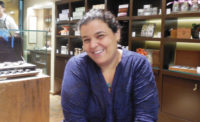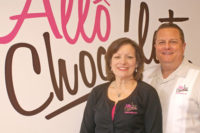“Like all Ilheans, Nacib dreamed of cacao groves, of trees bearing golden fruit, golden also in value.”
Jorge Amado, Gabriela, Clove and Cinnamon, 1958
This wasn’t my first trip to Brazil. After all, I had been there in 2005, visiting the dairy and caramel giant, Embaré. And again, in 2010 for the Sweet Brazil show as well as stops at Garoto and Riclan — two leading Brazilian confectionery companies. Both of those journeys introduced me to the country’s dynamic confectionery industry and its potential for future growth.
This trip, however, I uncovered its soul, which lies in the jungles of the Amazon — cacao. Although most of us associate cacao and chocolate with Central America and the Mayans, its origins are definitely Amazonian.
When it comes to Brazilian cacao, those of us who have some knowledge of the cocoa and chocolate industry immediately think of witches’ broom disease, which devastated the Brazilian cocoa crop in 1989, almost wiping out an industry that once was the largest producer of cocoa.
And while I had heard of efforts by the Brazilian government as well as multinationals to reinvigorate this once proud and powerful agricultural segment, I really didn’t have a good grasp of what cacao has meant to Brazilians. Nor did I quite grasp the history and culture that went back to the mid 1700s.
That all changed on this press tour, which was sponsored by ABICAB, the Brazilian Cocoa, Chocolate, Peanut and Candies Manufacturers Association, and by ApexBrazil, the Brazilian Trade and Investment Promotion Agency.
It started with Diego Badaró, founder of Amma Chocolate, a “tree-to-bar” company. The 39-year-old explained how he fell in love with his family’s declining cocoa plantations, which he gradually returned to production to source his chocolate making venture. Drinking cocoa juice and sampling his fine-flavored chocolates simply intensified the story.
It continued with our stopover in Ilheus at Bataclan, the one-time bordello-turned-restaurant where several local cocoa producers, chocolate makers and chocolatiers showcased their wares. The following day’s visit to Provisão Farm took us to the fields where cacao is grown.
There, I tasted the white fruit straight from the cocoa pod, enjoying raw milky seeds. And it was there that I saw the vestiges of colonial plantations and the “Big House” overseeing the farm.
The journey came to its logical conclusion in São Paulo, Brazil’s economic center, where we visited with several confectionery manufacturers, including Harald, which just launched its Brazilian line of chocolate bars, most of which are sourced from the Amazon. It was in São Paulo where Badaro invited us to his retail shop and urban test kitchen where he develops such wonderful concoctions such as nib tea and suspiros (Brazilian meringue cookies) made with jambu, a flowering herb known as the toothache plant because of its numbing characteristics.
A final stopover in Rio de Janiero revealed once again the passion that’s behind Brazilian confections. There at the Porcao Flamingo churascia overlooking bay, I enjoyed lunch with Aline Campos, international business manager for Enova Foods. Campos, who represents one of the largest nut snack bar companies, personalized the vigor and vitality of Brazil’s confectionery industry.
And it was in Rio that Samantha Aquim, the chocolate maker behind Aquim, drove home how deep-rooted and passionate the resurgence of fine-flavored cocoa has become. So come with me on this soulful journey to Brazil. I’m hoping you find it akin to the premium chocolates I sampled: aromatic, fruitful and intensely satisfying.
Check out the rest of our Brazilian cocoa content:








